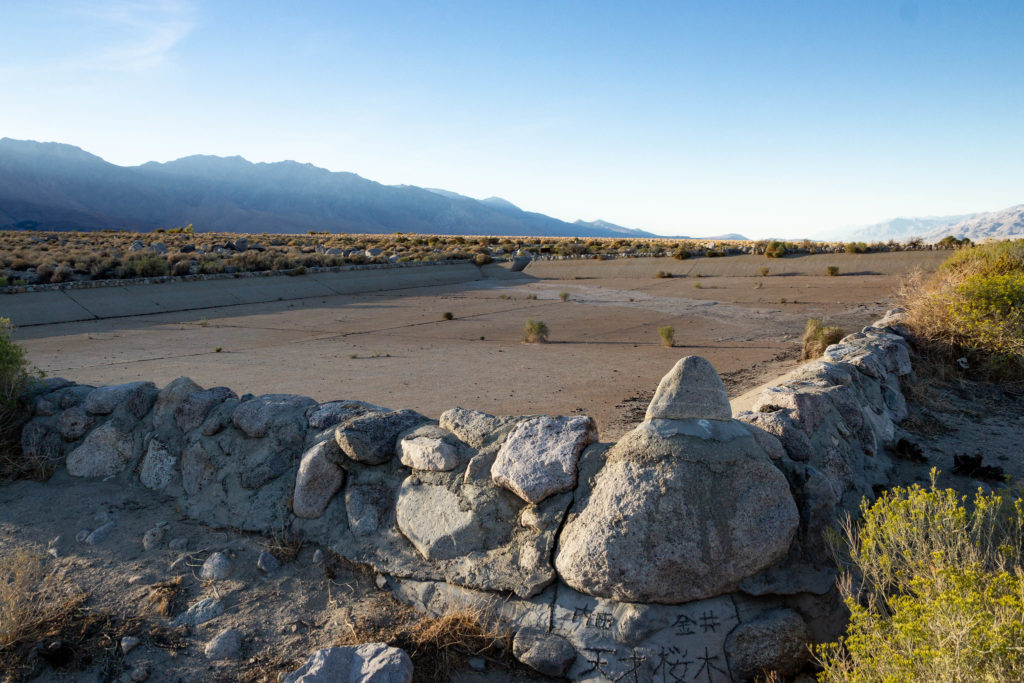
The original version of this post was published February 19, 2005
The Writer’s Almanac notes today is the anniversary of the date in 1942 that President Franklin D. Roosevelt signed Executive Order 9066, ordering more than 120,000 Japanese Americans into remote internment camps. It’s an event we all know in the sense we’ve heard of it. Having heard about it, most of us have an opinion about it; the prevailing view, embraced eventually even by a president as conservative and all-American as Ronald Reagan, is that it was a tragic mistake.
In another way, it’s a history we know little about. Especially in a place like Berkeley where more than 1,000 residents (the official number, published in the Berkeley Gazette in April 1942, was 1,319) were forced to leave. Several older Japanese-American couples lived in our neighborhood when we moved here in the late 1980s. They were of a certain age — my parents’ age — that made me wonder not whether their families had been sent to the camps but what their experience of incarceration had been. I never talked to them to find out. But you realize that on this street, or the next one over, and all over town, families were sent packing. To the California deserts, Utah, Wyoming, Arkansas, wherever the camps could be set up quickly.
In San Francisco, the Chronicle ran a story marking the departure of the last “Japanese” from the city.
“For the first time in 81 years, not a single Japanese is walking the streets of San Francisco. The last group, 274 of them, were moved yesterday to the Tanforan assembly center. Only a scant half dozen are left, all seriously ill in San Francisco hospitals. “
At the University of California’s commencement, campus president Robert Gordon Sproul announced that the senior class’s top student “cannot be here today because his country has called him elsewhere.” Three weeks earlier, the student, Harvey Akio Itano, had been sent to the Tule Lake camp in northeastern California. (While his family remained incarcerated, he was released soon afterward and allowed to begin his medical studies in St. Louis. As a researcher after the war, Itano played a key role in discovering the molecular basis for sickle-cell disease and is recognized today as a pioneer in the study of blood diseases.)
Among the other UC seniors forced out of school before graduation was Yoshiko Uchida, who lived with her family on Stuart Street near Shattuck Avenue and kept a scrapbook (online through the University of California) of her new life (and later wrote many books about it).
You can go looking for scraps of the internment history, and sometimes they find you instead.
In October 2004, I was driving back to the Bay Area from Mojave and decided to take the long way, up U.S. 395, at the foot of the Sierra Nevada’s eastern flank. Late in the afternoon, speeding north up the dry floor of the Owens Valley, I passed a sign saying Manzanar was just ahead. I knew the name, that it was one of the camps, that it was out in the middle of the desert someplace, but not much more than that. Suddenly, here it was. So I turned off and spent a while driving around what is now a national historic site.
Sagebrush has claimed most of the camp, though you can see come of its streets leading off into the desert, and several barracks buildings have been rebuilt. The most-frequented place at Manzanar — not counting the visitor center — is the cemetery. The bordering fence is heavily festooned with origami cranes, and lots of impromptu memorial offerings have been left behind. The gleaming white cemetery monument is carved with the kanji “I rei to,” or “soul-consoling tower.”

